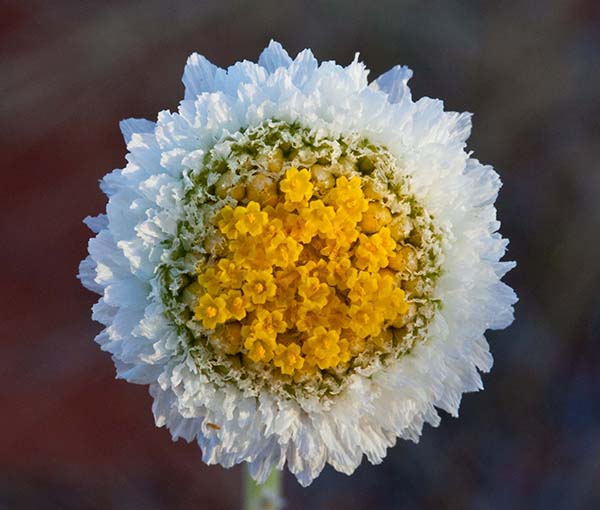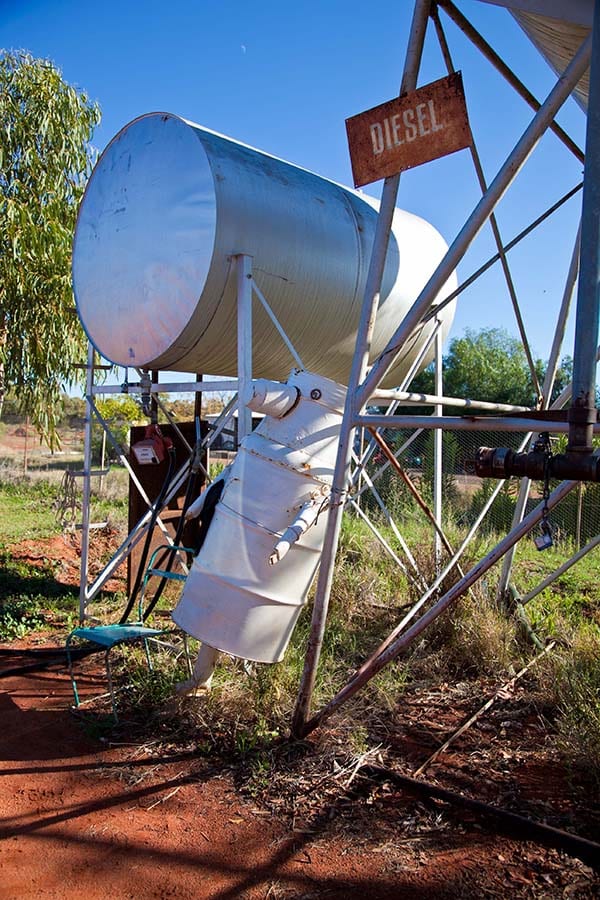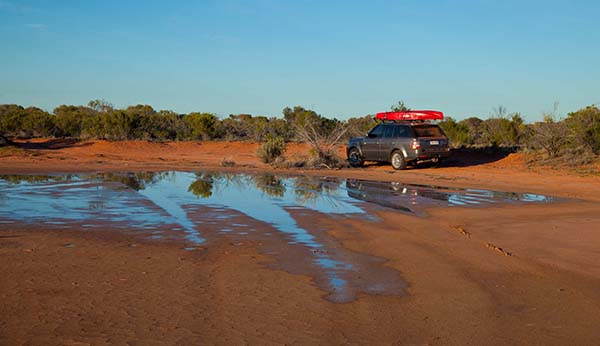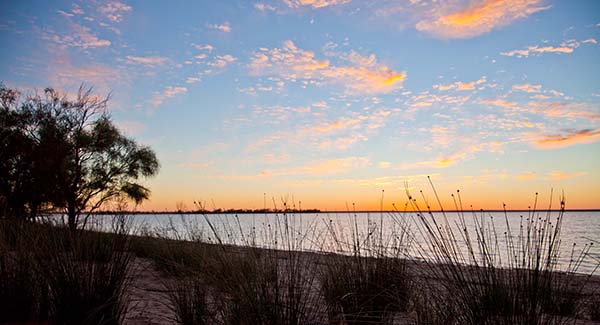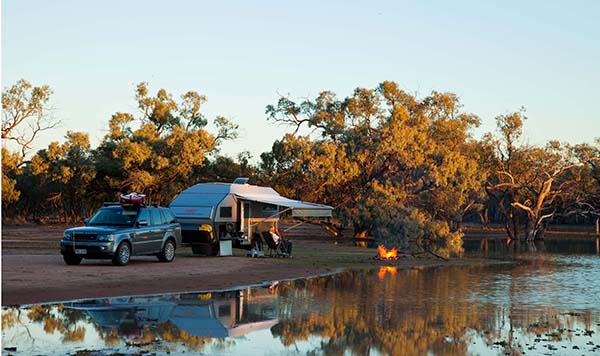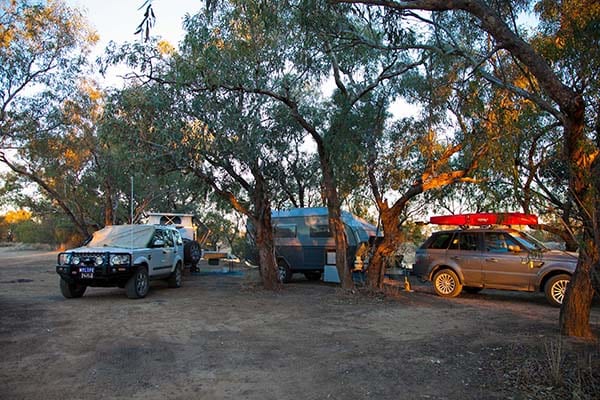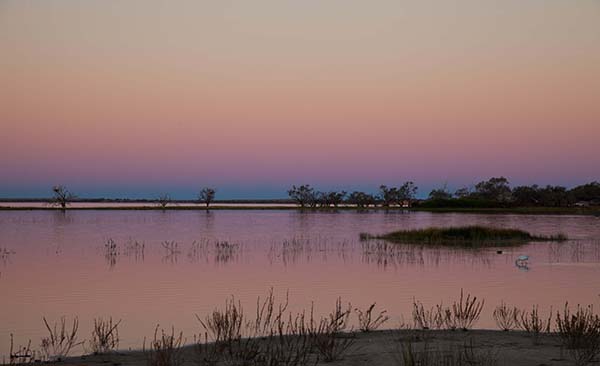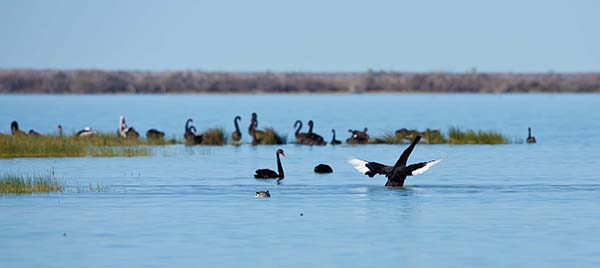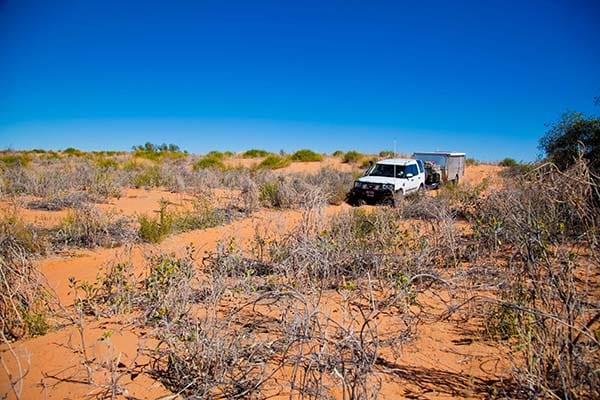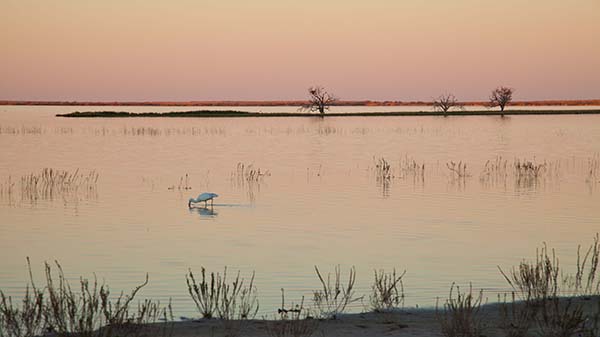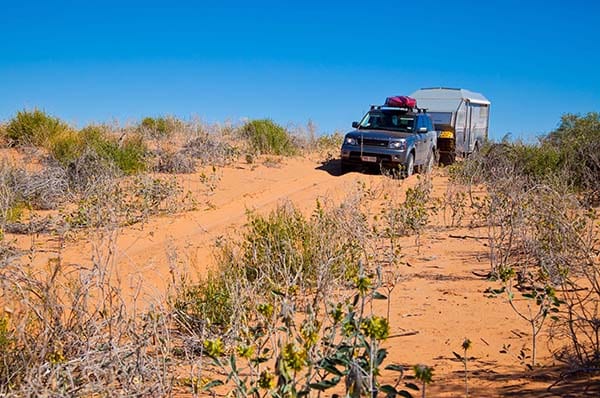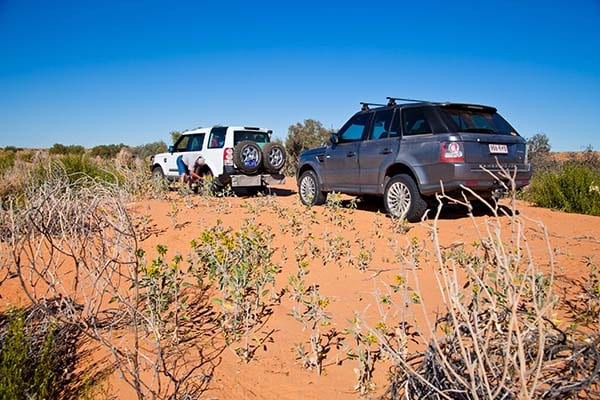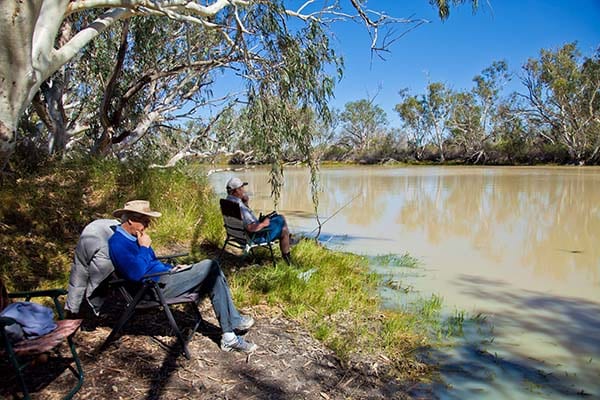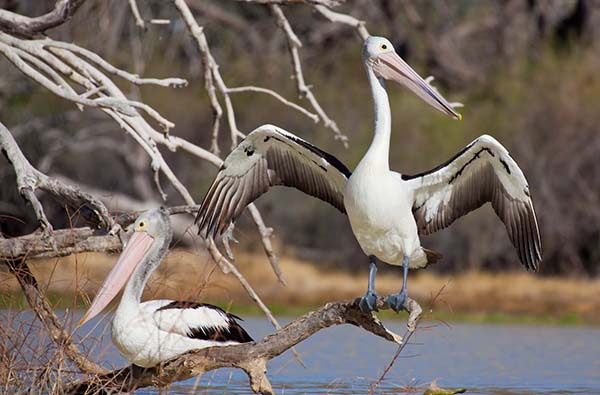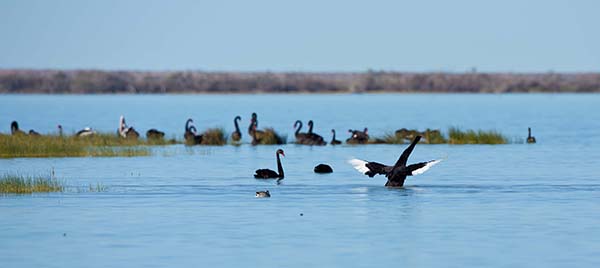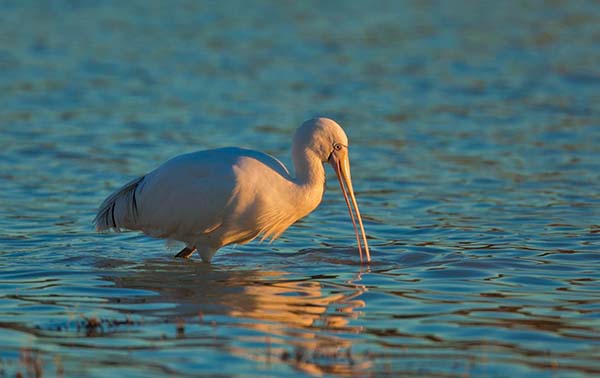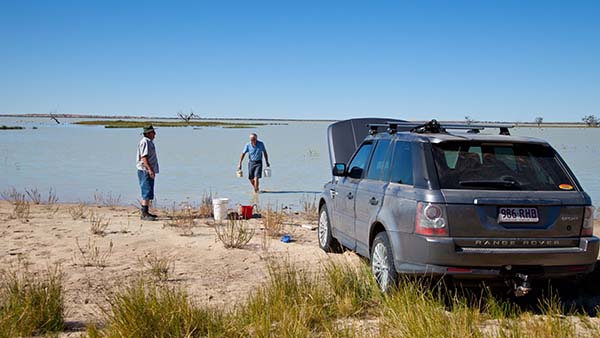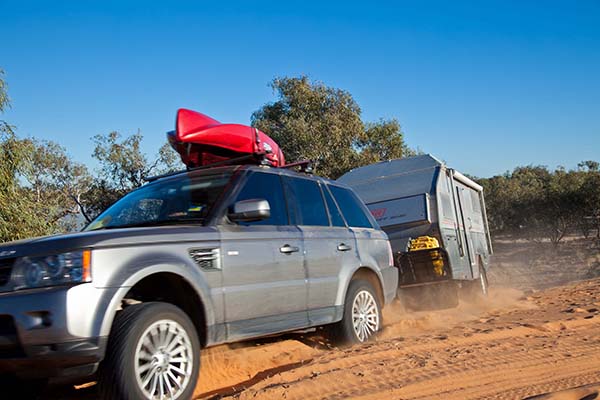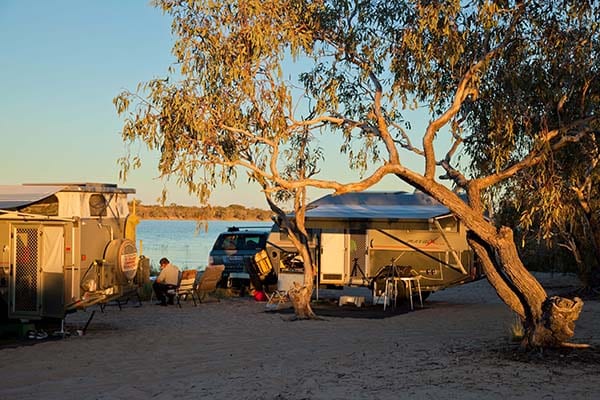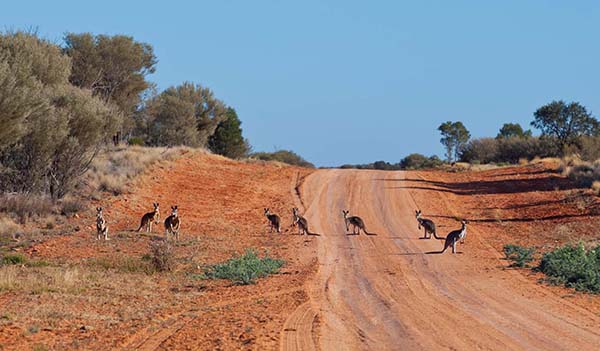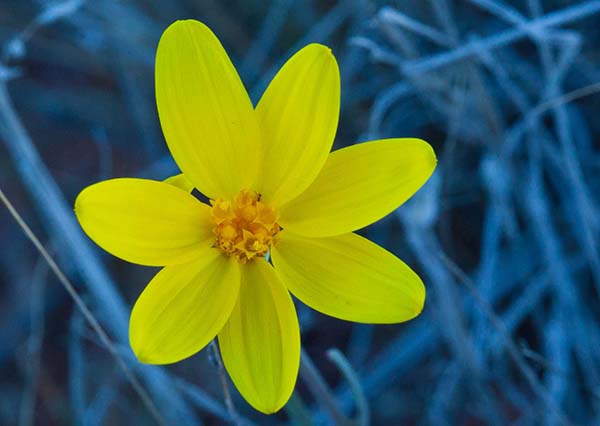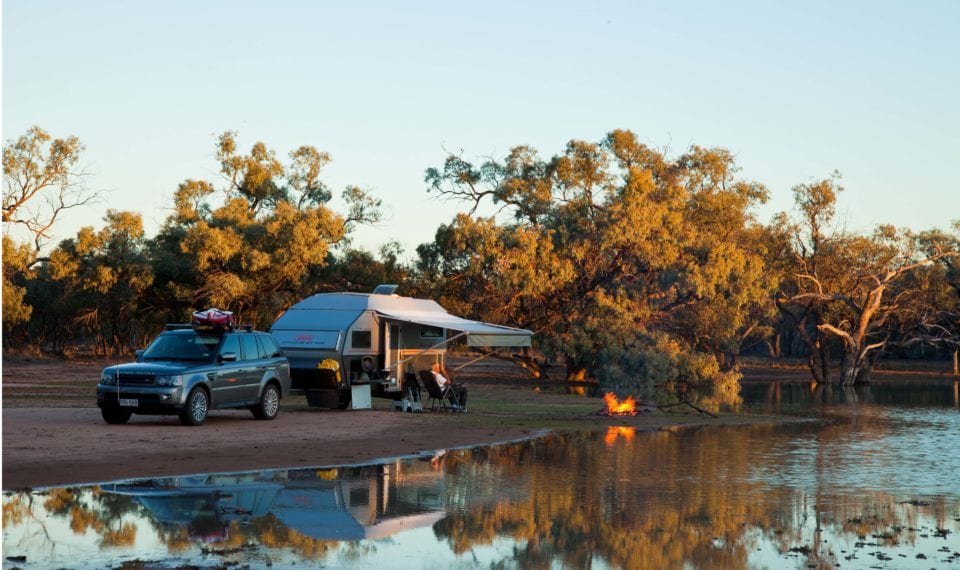The Coongie Lakes area is an absolute gem that well deserves to be high on any dedicated off-roader’s bucket list.
This extensive series of lakes is, paradoxically, a wetland in an arid desert area, unique because of its myriad of bird life, including some rare or endangered.
Our visit to this amazing area some four years ago was all too short and our longed-for return had been thwarted by road closures due to ongoing flooding. But finally the word was out that it was accessible once again so how could we resist? It was a question of do we make the opportunity this season or wait until next winter and hope it remains open, or do we do the impulsive/impromptu thing and just go? Hey, impromptu/impulsive sounds good at our age; let’s just wind Ruthie the Rangie and Max the Matrix up once again and just go! For this trip our new Hobie kayak was added to our repertoire.
The red dirt starts appearing near Cunnamulla and it triggers anticipation that the more interesting bits are just around the corner …… in country terms that is, just a couple of hundred kilometres away. The road from Eulo to Hungerford was rough in some parts, clearly rain damaged, but the always-welcome grader was at work doing a great job of smoothing out the kinks.
Though something of a detour, our destination was 10 Mile Bore, a great little spot surrounded by Currawinya National Park. Information about this spot is passed surreptiously from camper to camper because it’s little known and unsigned but you’ll come across it if you hang a left immediately after the turnoff to the Granites. Because it’s a council area rather than National Park camping is free and it’s a great place to camp right on the water’s edge and be entertained by wildlife.
Like Coongie, Currawinya is listed as a wetland of international importance under the Ramsar Convention, valued for its spectacular array of water birds.
It encompasses Lake Numalla and Lake Wyara, which are separated by just a few kilometres of sand dunes, and again paradoxically, Lake Numalla is fresh water and Lake Wyara salt. It was in the hope of getting to see some of such birdlife and to capture the ideal light for photographs that we set off in near darkness the next morning.
Even at 6.30 the sun seemed reluctant to rise and Steve’s motor racing skills held us in good stead dodging untold numbers of animals. As it turned out our quest was in vain because there were no birds in sight. Not one! Soooo disappointing, especially when on our last visit to Lake Wyara from the Kilcowera side there was birdlife galore. Our (quite unscientific) reasoning was that perhaps it is seasonal??? Now if we owned the endless patience of the dedicated twitcher we may have come prepared to play the waiting game but the call to return to camp for breakfast outweighed the dedication for these wanna-bees. Besides, didn’t we have any number of lagoons, rivers and wetlands still to come?
Speaking of breakfast, on our return trip the kangaroos, emus and goats all seemed to have the same idea, being on the move in literally hundreds. Playing dodge-em-cars was never so much fun! Was this compensation for missing the birds? Perhaps not, but the animals were highly entertaining.
Hungerford is a quirky little place, or is it kitsch …….. or maybe just a bit of fun? The proprietors clearly spend their spare time between visitors making the creations out of improvised materials and place them strategically around the pub. A former Cob-n-Co staging post, it comprises just one hotel that multi-tasks as post office, info centre and fuel depot. Filling with diesel is a step back in time, having it gravity fed from large overhead tanks at the rear.
Kilcowera is a remote cattle property that has camping available on the banks of a large lagoon. Our previous visit had been at Easter about three years previously and at that time there was lots of birdlife, in particular a nest, right in front of campsite, of Pacific Heron fledglings, with mum flying in to feed them. They were quite entertaining and became the most photographed Herons ever! But this time alas, very little birdlife – just a couple of little black front dotterels, a few smaller birds and one lonely pelican. At least we had a chance to give the Hobie an outing, and floating around on the lagoon amongst the reflections at sunrise isn’t a half bad way to start the day.
The theory with the Hobie is that peddling rather than paddling, as well as being much easier and faster, makes fewer ripples so as not to disturb wildlife, a significant aid to photographing them. Now I own no little skepticism about this theory – the idea of a duck, for instance, being completely unperturbed by a person in a red kayak floating by and conveniently remaining in place to be photographed. But the jury is still out on this theory, at least till the end of this trip.
Thargomindah has the only mobile phone service in the area and the last before heading west so internet addicts beware! It’s also the last place to fill up with water and the last general store of any size, albeit with just a limited amount of groceries.
Bulloo Downs Track was the route of choice, mostly because it was one we hadn’t done before, but also because it was the most direct route to Cameron Corner. The folk at Kilcowera suggested we first call Patrick at Bulloo Downs to check out the conditions. The track runs through the property that gives it its name, as well as Tickalara and Narilco Stations so, as with all station tracks, it involves opening and closing gates. These are often a puzzle for the practically challenged. I mean, really, how can there possibly be so many different configurations of chains, clips and hooks to close a gate???
The track was in reasonably good condition but you know you’re remote when you drive most of the day and see only one vehicle. The vastness and isolation of these properties is just incomprehensible to we East Coasters. So many things we take for granted clearly aren’t available to those who live here and it clearly takes a special type of person to live and thrive in these areas. Things like fresh fruit and vegs for instance: where would you get these unless you grow them? And even that would be problematic in the heat of summer. Certainly the shop-a-holic should not venture here. Then there’s mobile phone reception. This doesn’t even appear on the horizon – that is unless you believe the pollies……..
With no way to make Cameron Corner by nightfall the only option was to pull over and camp just off the track, so often the only choice in remote parts. Of course with the Matrix we don’t just have five stars, we have millions of them, in all their stunning glory. The evocative Southern Cross appears front and centre on a stage that looks like a great cosmic blanket of diamonds. The silence is so intense it’s almost tangible. Is it spooky – no phone, no other human within cooee? Well, yeeees…..just a little. Woolf Creek has a lot to answer for. But I assure myself that it’s probably fifty times safer than being on a city street and we are perfectly safe in our little cocoon.
Entry 2
Certainly the feeling of isolation is intense, but isn’t that all part of the adventure? I’m also great reassured by the reliability of our vehicles – so critical for safety and comfort. It’s almost incomprehensible that we could be in a place like this and still enjoy all the luxuries like a hot shower, a well-chilled glass of sauvignon blanc and Steve’s tasty effort on the bbq. Then there are all the benefits of solar power like being able to download and process the day’s images using the inverter, charge our kindle e-books etc.
We had fond memories of a previous trip to Cameron Corner when the colour and variety of wildflowers lining the red sand hills created a visual feast. This time though the flowers were making a brave effort to burst through, the lack of winter rain was making their appearance much more problematic.
Speaking of isolation, we reached Cameron Corner to find the one and only public phone was out of order! And filling up with diesel was an experience at $2.50 per litre. With no communication possible, meeting John and Annie at Cameron Corner with them having to come all the way from Victoria was a bit of a lucky dip, but find them we did and set out with them in their Quantum and Disco for Innaminka.
The extent of the mining development in this area, both gas and oil, is quite extraordinary. This naturally involves lots of trucks with heavy equipment and wide loads that tend to own the road and meeting one of these on a crest of a hill on a gravel road is not our idea of fun. John and Annie had a close shave with a crane truck on the crest of a hill a short distance from Innaminka, and Steve and I had a ‘whew’ moment with a water tanker also on a crest, en route to Coongie. Responding to incidents like this requires quick thinking and considerable driving skill, but the behavior of the tow vehicle is also critical in these situations and can mean the difference between just having to take a deep breath or tragedy.
Our favourite spot at Innaminka is the picturesque Policeman’s Waterhole with its arching river gums full of birdlife and the ubiquitous pelicans fishing in the fertile waters of Cooper Creek.
Camping there has the distinct advantage of being able to have campfires. This was especially important for John, our resident firebug, already having withdrawals about the idea of not being able to have fires at Coongie. Cullyamurra is another popular campsite in this area and we had reports from other Quantum owners about excellent yellow belly catches at Cullyamurra during their ten-day camp there.
Water is arguably the most critical issue for remote camping and the huge capacity in both Quantum and Matrix really came into its own on this trip. Our previous fill-up had been at Thargomindah where the bore water is reasonably good but Cooper Creek water at Innaminka is less than desirable for anything other than water for the black tank. Not filling up here however meant an extended period to come with our existing water.
The 106km track to Coongie was fairly sandy and corrugated – certainly not too challenging, although some areas are low lying enough to be easily affected by rain and it’s easy to imagine how quickly it would become impassable in the wet. The track clearly enjoys something of a reputation because we met a number of owners with supposedly off road caravans both large and small who weren’t prepared to risk it and had to settle for a day trip. What a missed opportunity!!! The only section that may deter some is the final sand hill into the campsites but this is easily negotiated with low tyre pressures.
One of the great things about Coongie is being able to camp right on the shore and we followed the shoreline over a second sand hill to the eastern side. We persevered with this spot for two days but it was full on into a fairly stiff breeze so we spent some idyllic hours over on the protected Cooper Creek side fishing, reading, kayaking and photographing. John was over the moon with catching two good sized yellow belly but a third even larger one will go down in AOR folklore as the one that got away. It seems the mussels John collected around the shores of Coongie made for excellent bait.
Spotting a small flock of red rumped parrots was a surprise and a little eagle was a regular visitor, but the really delightful ones were the little corellas. They arrived on cue at the same time each day, sat in groups on the low branches of the river gums taking it in turn to drink, then snuggled up in pairs in cozy little places in the trees.
With the wind persisting we decided in the interests of comfort to move to a sheltered spot we’d spotted on the western side of the lake. Of course this meant going back up the sand hill that we hadn’t thought much about coming down, but the prospect of having to tow the Quantum and Matrix up the slope on the soft dry sand gave us pause. And having an audience of skeptics at this stage didn’t help. It was a case of reducing tyre pressures down to 18 PSI, gunning it, and hoping for the best. All good. Yep, those tyre pressures…….a solution to almost everything.
The great features of both Matrix and Quantum really come into their own in a remote spot like this with heaps of solar power, huge water capacity and bucket loads of storage for gear. With no facilities at all near the lake in this instance the on board shower and loo made the difference between pure luxury and grumpy inconvenience! The only available loo was over the sand dunes by the Cooper – much too distant for a quick dash when a call of nature comes just a little too late.
Our new campsite was not only more sheltered, it had the added advantage of facing a refuge island for bird life. Ahhhhh! This is what it’s all about ………. sitting by a lake amidst the purples and pinks of a dramatic sunset, mesmerized by the antics of a myriad of ducks, swans, pelicans, spoonbills and other feathered friends – a photographer’s paradise. There are tantalizing smells coming from the roast on the BBQ and a bottle of one of South Australia’s best reds that somehow manages to further enhance the colours of the sunset. Contentment? Absolute heaven!!!
The lake was so shallow the Hobie had to be paddled rather than pedaled so a verdict for the creep up on wildlife theory will have to wait for a future trip. But John obviously found the experience relaxing. We found him asleep on board!
The Weber comes into its own on these trips, not only for meat dishes, but it does take some experimentation. Windy conditions in particular make cooking times and temperatures unpredictable. I had made a couple of attempts at muffins and though Steve made short work of them they were a bit burnt on the bottom. When Annie decided to experiment we put the cast iron breakfast plate under the muffin tin to even out the heat and decided to aim for a constant temperature of 170 degrees. John was so excited by the prospect of fresh hot muffins he took up a position by the Weber like an anxious expectant father to keep a constant eye on the heat and ensure the ideal temperature was maintained. His efforts were rewarded with scrumptious muffins that were cooked to perfection.
At this stage John decided to make the best of the opportunity to trial his water filter invention. The Rangie was employed near the water’s edge to access battery power and Steve ventured out into the lake to try to find water clear enough for the great experiment, and almost had to stay there when he became bogged to his knees. Hours passed with much concentrated discussion, repeated trips into the lake and much trial and error, but sadly the only visible result was a somewhat less muddy bucket of water! The conclusion was that while John’s device might work for the clear waters of southern streams, Coongie water was just too full of clay.
John and Annie decided Coongie was now high on their list of all-time favourite campsites, even given the absence of the much loved campfire and it was certainly right up there with memorable camps for us. But as sad as we were to leave, water was becoming an issue. At that stage we had lasted eleven days without refilling, still enjoying great hot showers, the loo and all the other uses, but we also had to allow enough for a couple of days to make it back to Thargomindah for the next available water.
Regretfully, it was goodbye to this magnificent place as we headed for home and John and Annie to spend some time on the Sunshine Coast. But who could ask for more than an experience like this – having all the mod cons in luxury trailers, great company, and a camping experience on the shores of this unique and pristine place?
Supplies
One of the greatest difficulties I have is judging quantities of food for an extended remote trip knowing there’s no capacity to restock in remote places. This is especially the case if, like us, you’re into fresh fruit and veges. How do you keep weight to a minimum but try to cover all bases? Do you plan every meal, or stock to capacity and hope it all fits?
My planning falls somewhere in between. We have enough freezer capacity in the Matrix and the car fridge to take all our meat, chicken and fish. Then I take enough fruit and veges to last until they deteriorate. In the Matrix shoe boxes in the drawers work well for storing these, especially if you keep the tissue paper. Apples and oranges travel well and cooked green apples are a good breakfast fruit when the fresh stuff runs out. Dried fruit is much lighter and more space efficient than tins. Some clever people use their Weber to make bread in which case a bread mix is a good idea but I haven’t experimented with that as yet.
I was glad to be able to pick up a few things at the general store in Thargomindah (even if green apples were $8.00 a kilo and a cucumber nearly $5.00) but that was it as far as any further supplies. But even a central spot like the Innaminka had little in the way of food supplies.
Laundry
On a previous trip we made the best of a laundromat at Innaminka but this is no longer available. It’s a good idea to take extra clothes, sheets and towels because the rivers aren’t suitable for hand washing and using your trailer capacity is often not an option.

